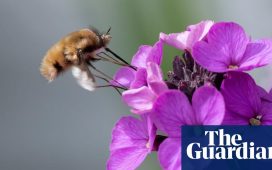Scientists have discovered where a whale species that feeds around the sub-Antarctic island of South Georgia breeds during the winter months. This understanding of where the animals migrate from will enable conservation efforts for their recovery from years of whaling. The results are published this week (20 May 2020) in the Journal of Heredity.
Southern right whales were hunted to near extinction after centuries of whaling. In the most comprehensive study of its kind, 30 researchers from 11 countries studied 15 skin samples from whales feeding around the sub-Antarctic island of South Georgia and compared them to 149 samples collected from around Argentina and Brazil and South Africa where the whales breed and give birth to their calves. New samples were collected from South Georgia during an expedition led by the British Antarctic Survey in 2018 and were combined with samples held by a network of collaborators across the globe.
Using a new genetic tool, the team discovered that most of the animals visiting South Georgia were calved around South America and not South Africa. This had previously been suspected, but not confirmed.
Lead author Dr Emma Carroll, from University of Auckland says: “Genetic methods are important in linking whale breeding grounds, areas that are closely monitored for population recovery, with feeding areas that are being and will be impacted by climate change. It is only by understanding these links that we can understand how whale populations will fare in a changing world.”
Collaborating with Chilean colleagues, the team also analysed the first ever DNA sample from the Critically Endangered Chile-Peru southern right whale population. They found genetically, the Chile-Peru whale is a mixture between Indo-Pacific and Atlantic calving grounds, suggesting Chile-Peru has acted as a ‘stepping stone’ between these two areas.
Whale ecologist and senior author Dr Jennifer Jackson, at British Antarctic Survey, who led the project, says: “This is an important part of the jigsaw in understanding the geographical range of southern right whales. Identifying the migratory links of recovering whale populations is crucial to build accurate assessments of how well whale populations are recovering, and to understand how vulnerable these populations are to anthropogenic threats through their life cycle.
“There have been unexplained high whale calf mortalities around Argentina in the Península Valdéz region over the last 17 years, so there is a lot of work to be done to protect this species throughout their migratory range.”
The team are also tracking the movements of two South Georgia right whales in real time using satellite tags. One whale is already migrating towards the South American coast, providing further evidence of the migratory connection. Follow these whales here: https://www.bas.ac.uk/project/south-georgia-right-whale-project/south-georgia-right-whale-project-whale-tracking/
Notes
- Southern right whales were so named because they were the ‘right’ whale to hunt, and in the South Atlantic they have been heavily exploited for over 350 years, with catches peaking in the mid 1800s. Only in the past three decades, have southern right whales again become regular winter visitors to Argentina, Brazil and South Africa, where they use sheltered bays to calve. Another population to the west, in Chile and Peru, has not fared so well, and the lack of recovery from whaling has led this population to be declared ‘Critically Endangered’ by the IUCN.
- In 2009, the global estimate of southern right whales was estimated as 13,611 and the calving grounds in Argentina and Brazil was 4,029.
- The Wild Water Whales project has been running since December 2016, and focusses on studying the population recovery and health of southern right whales in South Georgia waters. The project involves sightings surveys, using acoustic methods to find whales, collecting photo-identifications and skin samples to identify individuals, tracking whales to find out where they feed, and studying the health condition of right whales using drone technology.
- Historically, the seas around South Georgia are historically a key feeding ground for multiple whale species, including the southern right, humpback, blue and fin whales. The area is abundant with food in summer, namely krill, a shrimp-like crustacean, which provides a key part of their diet.
- Led by British Antarctic Survey, the South Georgia Wild Water Whales project has been funded by an EU BEST Medium grant, the Darwin Initiative, South Georgia Heritage Trust, Friends of South Georgia Island and the World Wildlife Fund.
- The project used a new genetic tool for population visualisation and assignment (GENEPLOT) which estimated how well for example samples from South Georgia could be assigned to wintering ground datasets from Brazil, Argentina and South Africa.
Story Source:
Materials provided by British Antarctic Survey. Note: Content may be edited for style and length.












